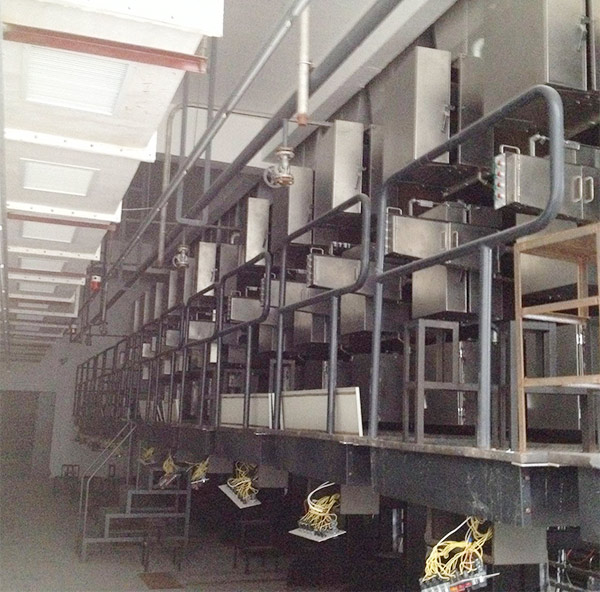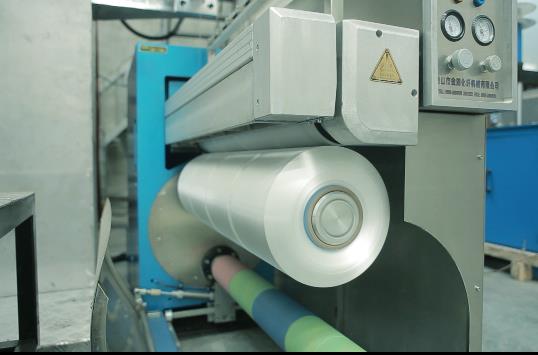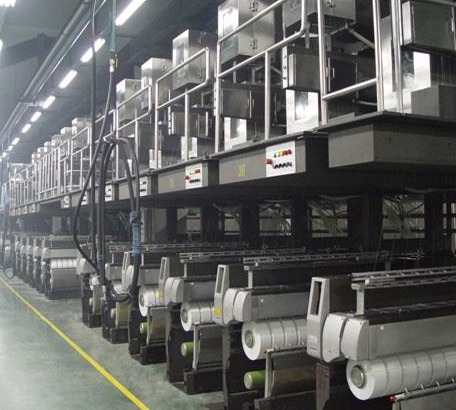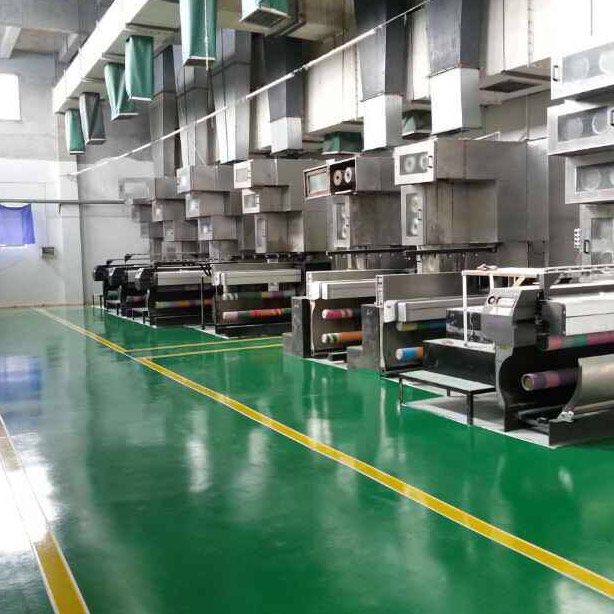- Polypropylene spinning machine
- Polypropylene FDY equipment
- Polyester POY spinning machine
- Polyamide FDY common and high strength equipment
- Polyester FDY equipment
- Polyester high strength equipment
- polyester、Polyamide、 Polypropylene BCF equipment
- Small spinning machine
- All kinds of spinning special parts
- Polypropylene FDY spinning machine is a key equipment for the production of high-performance fibers
- Several silk textile industry renewal projects in Shengze have started construction
- The Winter Solstice marks the rise of Yang energy. In Fubon spinning machines, the Winter Solstice code is revealed, a dialogue of craftsmanship spanning a thousand years
- The establishment conference of Guangzhou Modern Textile and Garment New Quality Productivity Research Institute and the co-construction conference of the textile industry innovation ecosystem were held
- The key points of control in the polypropylene FDY spinning machine process and their relationship with quality

- Contact:Mr. Huang Guofu
- Cel:0086-13901505556
- Fax:0086-519-83341119
- Email:czfb5556@126.com
- Add:No. 288-8 ChangLi Rd, Huangli Town, Changzhou, JS PRV.
China Textile Export
Exports of textiles and garments hit the brakes in August, falling 14.7 percent. Overseas consumer market is weak, Southeast Asia diverting orders, foreign trade enterprises have felt the order anomalies.
Textile service export growth slowed down
According to the customs data, China's textile and clothing export volume in August was USD 30.976 billion, the year-on-year growth rate slowed down by 14.7 percentage points from July's 17.58% to 2.88%, among which the year-on-year growth rate of textile export volume turned to -0.23% from July's 16.2%, and the year-on-year growth rate of clothing export volume slowed down from July's 18.55% to 5.10%.
Inflation in major foreign economies is high, central banks in the US and Europe are raising interest rates faster, and international market demand is falling back. At the same time, after the price of chemical fiber and cotton textile materials fell, the price of textile clothing fell, leading to a decrease in exports. The above two reasons dragged down the growth of China's textile and clothing exports in August.
The boss of a textile and foreign trade company in Haining, Zhejiang province, said, "From January to August [export orders] increased by 38% compared to the same period last year, because the performance of the same period last year was so poor. This year, we are lucky to develop a new customer. The factory they cooperated with made a serious mistake, so the order was transferred to us. With this increment, our order volume this year can be the same as last year. "Southeast Asia is the domestic to do more basic factories, relatively high-end is still staying in China. But in fact, for the industry, the basic is important, although the profit is thin, but the volume of large, large proportion, can support the production of the factory, to ensure profit."
Liu Jie believes that Southeast Asia's textile export base is low, the industrial structure is not very sound, cotton and other raw materials rely on imports, production scale, industrial level, raw material cost and there is still a gap with China, so the impact of order transfer is limited.
It is more difficult for foreign trade enterprises to obtain orders
Recently, China Council for the Promotion of International Trade for more than 500 enterprises to carry out a questionnaire survey shows that enterprises are currently facing slow logistics, high costs, less orders and other major difficulties, 62.5% of enterprises said that the order is unstable, short order small order more, long order big order less. Market downturn, lack of willingness to consume, making it more difficult for textile and garment foreign trade enterprises to get orders. On the other hand, the increase in orders and exports is not directly related to corporate profits.
The above industry insiders further said that companies with capital strength will transfer production capacity to Southeast Asia, effectively control costs through the layout of the industrial chain, but for many small and medium-sized enterprises, can only "receive orders, no orders on the shutdown". This means that industry obsolescence is accelerating.
Compared with small and medium-sized enterprises struggling to survive, leading enterprises rely on the layout of Southeast Asia capacity and medium - and long-term cooperation with large customers, currently the order is relatively stable. The orders of the top three customers of Huali Group (300979.SZ) in the first half of the year have maintained year-on-year growth, and the current customer order rhythm has not changed, and the production capacity is climbing smoothly. New production capacity in Indonesia and Vietnam will be released in the first half of 2023. The capacity utilization rate of Jiansheng Group (603558.SH) in Vietnam has reached saturation state, promoting the volume increase of seamless business. At present, the order receipt situation of Q3 and Q4 is optimistic.
It is hard to be optimistic about the industry with low consumption momentum
Data showed that the US ISM manufacturing PMI index accelerated to fall in August to near the line between expansion and contraction, indicating that demand is about to enter a state of contraction, people's consumption of non-necessities weakened, putting pressure on domestic textile exports.
"Although we are in the peak season for gold, silver and silver, the domestic market is not thriving, and the same is true for foreign consumption."
Vietnam's textile exports are also suffering from falling demand. According to the Economic and Commercial Office of the Consulate General in Ho Chi Minh City, Vietnam's textile and apparel industry exported about $30.2 billion in the first eight months of this year, up nearly 20 percent year-on-year to an average of $3.7 billion to $3.8 billion per month, but is expected to export only $3.1 billion to $3.2 billion per month in the remaining four months of this year. Le Chin Chang, chairman of Vietnam Textile and Apparel Group, predicted the market downturn would last until 2023.
From the perspective of the total export of textile and clothing in January to August, the growth rate still maintained double digits, reaching a year-on-year growth rate of 11%; Textile exports reached US $102.27 billion, up 10.2%, and garment exports reached US $118.03 billion, up 11.6%.
Even if the peak season is not prosperous, but it is still the peak season, the increment will be guaranteed. Liu Jie believes that the "gold nine silver ten" traditional peak season is coming, China's textile and clothing exports are still expected to gradually volume, quarter-on-quarter growth is expected to turn positive. Faced with demand improvement, inventory decline, cost rebound and other beneficial support, coupled with the depreciation of the renminbi to enhance the international competitiveness of export enterprises, China's textile service export situation is expected to improve.
Chinese TEXTILE export enterprises are under pressure
The Wall Street Journal said that due to uncertainties in the international political and economic situation, shipping rates are likely to fall further during the rest of this year and into next year. From the current global economic situation, shipping freight down trend is certain, but to what extent and when the limit is difficult to decide.
At the beginning of the year, many shippers in order to avoid a case of difficult to find, and Marine logistics companies signed a long-term agreement, and now the market spot freight has been far below the signed price. If domestic shipping logistics companies blindly follow the price cut, it will not only damage the interests of shippers, but also not conducive to long-term cooperation, and the price cut will not bring the increase of transportation demand, "it is better to improve the service level, or develop new businesses such as speed shipping and cargo flow, rather than a price war".
This year, the situation of export enterprises "a box of hard to find" will certainly not be repeated, but this does not mean that it will send a positive signal to the manufacturing industry. Among the key factors affecting corporate earnings, freight accounts for a very small proportion, usually within 1% of the value of container cargo.
With gasoline and food prices soaring, consumers in the U.S. and Europe are no longer flocking to buy clothing, home goods, appliances and kitchen appliances, leaving retailers with large inventories.
Major U.S. retail importers are not optimistic about U.S. consumption expectations and have slashed retail orders. Wal-mart canceled billions of orders; Target canceled more than $1.5 billion in orders and said it would take "necessary" actions, including price cuts and cancellations. Both Walmart and Target are forcing some suppliers to absorb rising costs.
European and Japanese importers are even more difficult. The euro has depreciated to parity with the US dollar and the yen has fallen to a new low in more than 20 years, causing their purchasing costs to rise sharply and some customers are afraid to place orders at all.
The demands of enterprises mainly focus on maintaining the stability and smooth flow of international and domestic logistics, implementing relief and assistance policies, and facilitating cross-border personnel exchanges. Some enterprises are looking forward to the resumption of domestic exhibitions and the opening of overseas exhibitions to get more orders.
Disclaimer: This article is compiled from the Internet, the copyright belongs to the original author; If there is infringement, please inform in time and delete after verification.
- Several silk textile industry renewal projects in Shengze have started construction
- Polypropylene FDY spinning machine is a key equipment for the production of high-performan
- The Winter Solstice marks the rise of Yang energy. In Fubon spinning machines, the Winter
- The establishment conference of Guangzhou Modern Textile and Garment New Quality Productiv
- The key points of control in the polypropylene FDY spinning machine process and their rela
- A Guide for Managers to Break Through: Empowerment Rather than Control: Helping Enterprise
- The 2025 Textile and Garment Innovation Annual Conference and the Gongqingcheng Down Indus
- The technological upgrade of polypropylene FDY spinning machines empowers the production o
- Textile News: Full-chain Efforts + Cross-border Breakthroughs + Talent Foundation - The Te
- The 2025 China Home Textile Fashion Innovation Conference grandly kicked off in Binzhou




